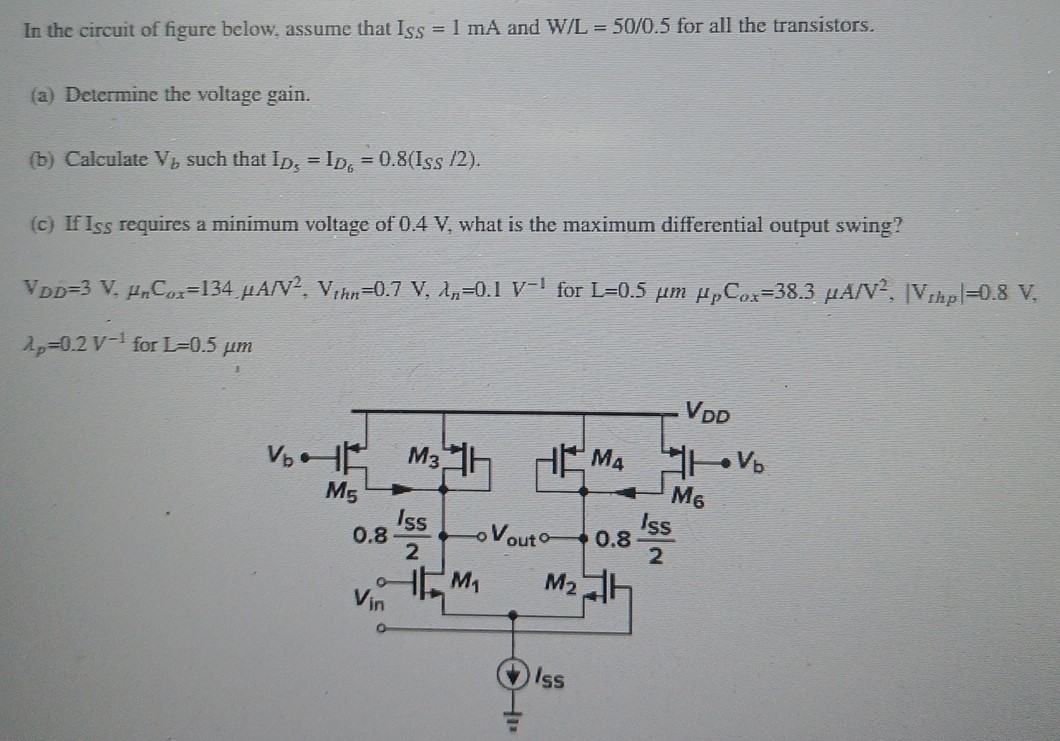In the circuit of figure below, assume that ISS = 1 mA and W/L = 50/0.5 for all the transistors. (a) Determine the voltage gain. (b) Calculate Vb such that ID5 = ID6 = 0.8(ISS/2). (c) If ISS requires a minimum voltage of 0.4 V, what is the maximum differential output swing? VDD = 3 V, μnCox = 134 μA/V2, Vthn = 0.7 V, λn = 0.1 V−1 for L = 0.5 μm μpCox = 38.3 μA/V2, |Vthp| = 0.8 V, λp = 0.2 V−1 for L = 0.5 μm
